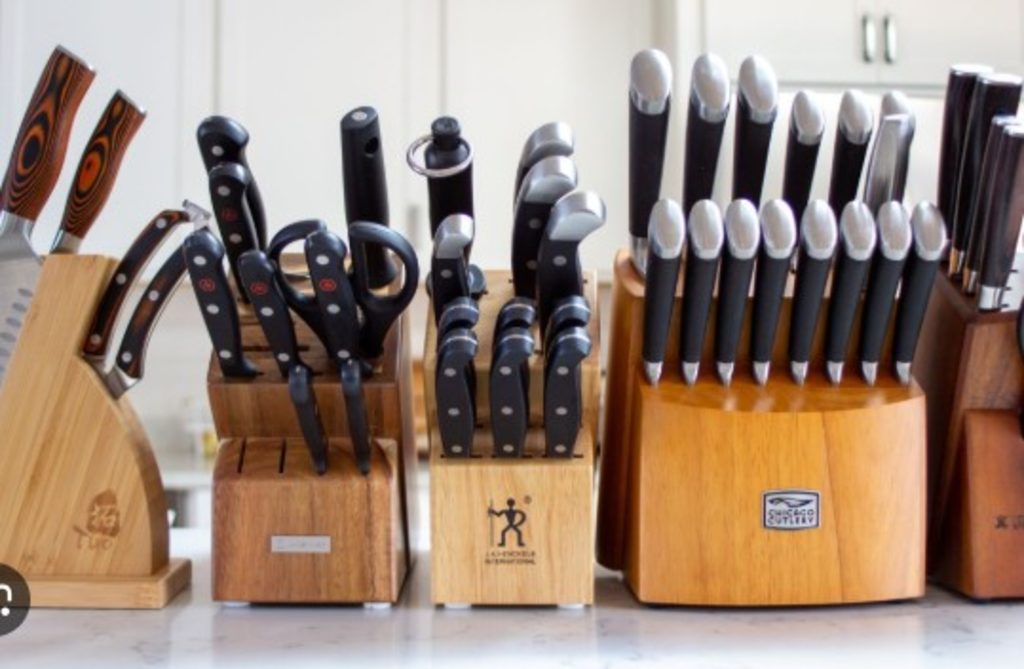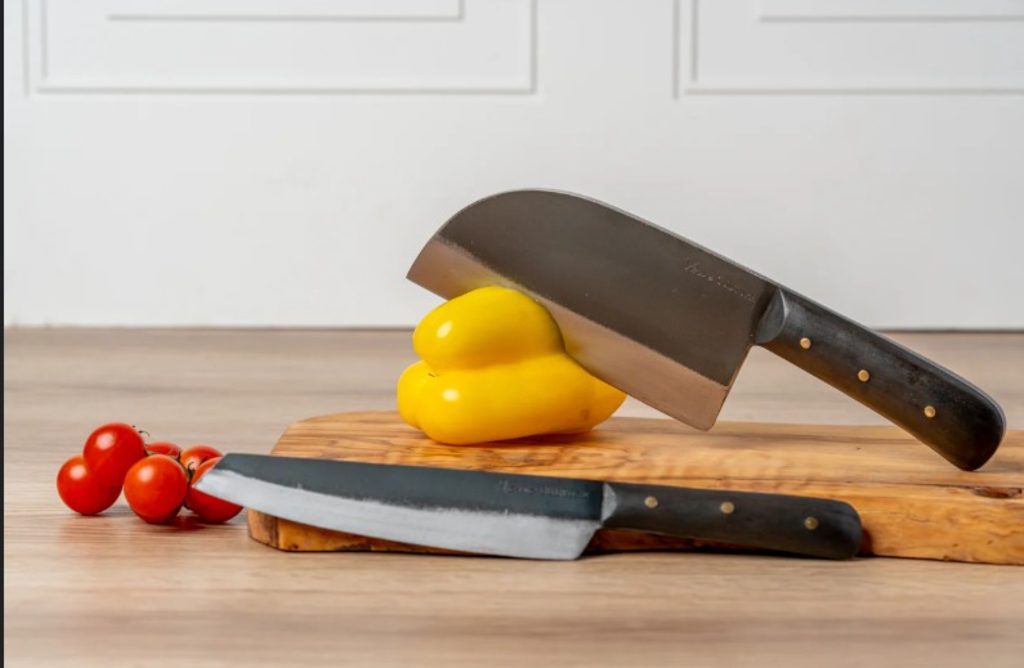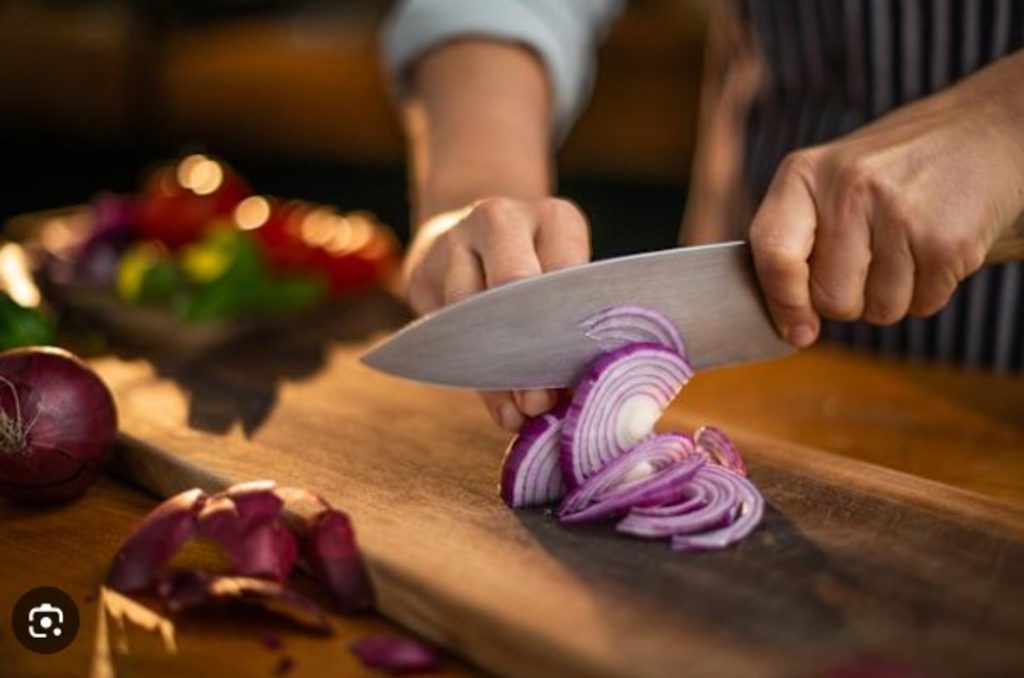In today’s fast-paced world, cooking often feels like a chore—but it doesn’t have to. When you finally find time to cook, the last thing you want is a dull knife slowing you down. Dull knives can make simple tasks frustrating and even lead to giving up and ordering takeout instead.
Your kitchen tools, especially knives, play a vital role in making cooking smooth and enjoyable. Whether you’re slicing meat or chopping vegetables, a sharp knife ensures clean cuts and efficiency. If you notice your ingredients tearing rather than slicing cleanly, it’s likely time to sharpen your knife.
According to oishya.com, many people don’t realise that dull knives are actually more dangerous than sharp ones. They require more force to cut, reducing control and increasing the risk of injury. In contrast, sharp knives glide through food, making them safer and more reliable.
Maintaining a sharp knife doesn’t take much time and just a little practice. With the right habits, your knives will stay in great shape, helping you cook safely and with ease.
Here are seven easy ways to keep your kitchen knives sharp and ready for use.
1. Honing rod
A common misconception is that a honing steel is a knife sharpener. In reality, honing steels—also called stropping irons—do not sharpen blades but realign them. Over time, a knife’s edge can bend or become misaligned with use, and honing straightens it without removing much metal.
To use a honing steel correctly, hold the rod in your non-dominant hand and the knife in your dominant hand. Elevate the rod so its tip points upward. Holding the knife at a 20-degree angle, carefully run the blade from heel to tip across the top side of the rod. Repeat this motion on the underside of the rod for the other side of the blade. Perform six to eight repetitions before using the knife.
With regular practice, honing becomes quick and easy, helping maintain a sharp edge and extending the time between actual sharpening sessions.
2. Whetstone
A whetstone, also known as a sharpening or water stone, is used to sharpen knives and comes in various grits. Lower grits (rougher) are used to repair edges and remove metal, while higher grits (smoother) are for finishing and polishing. Japanese whetstones are especially known for their efficiency. To sharpen, start on the rough side, grinding the blade to create a burr, then move to the finer side to smooth and refine the edge. You can grind one side for a traditional Japanese edge or both for a symmetrical edge. Alternate strokes on each side during the final stage.
3. Cut on the right surfaces
The surface you cut on greatly impacts your knife’s condition. Avoid hard materials like stainless steel, granite, concrete, or aluminum, as they can dull blades quickly. Instead, use cutting boards made from wood, plastic, or polyethylene.
Choose surfaces that aren’t easily cut to prevent bacteria buildup from trapped food particles. Japanese woods like hinoki and Aomori hiba are excellent options. Aomori hiba, known as the “Tree of Life,” has natural antibacterial, anti-mold, and germicidal properties—and a pleasant scent. Overall, using cutting boards made from the right materials helps maintain knife sharpness and ensures a safer, more hygienic kitchen.
4. Mug or cup
If you don’t have any equipment that is dedicated to sharpening knives, there are other (unfortunately, less effective and more time consuming) ways to sharpen them with common kitchen items.
You can use the bottom of a ceramic mug, plate or cup to quickly sharpen your knife. Maintaining a steady angle of around 20 degrees, slide the blade of your knife across the grit of the plate on both sides of the blade. If available to you, polish off the sharpening process repeating it for a few times with your honing rod, and you’re good to go.
5. Proper technique
Many start with cheap knives, like those from Ikea, and don’t see the value in investing in quality blades—especially without knowing how to maintain them. But once you switch to well-made knives, like Japanese ones, the difference in ease and safety becomes clear. Don’t worry if sharpening techniques feel tricky at first; it takes time and practice. While aiming for a 20-degree angle is helpful, consistency is more important than precision. A straight blade line indicates good sharpening. Shallow marks mean too low an angle, and blade-side marks mean too steep. Over time, your sharpening skills will naturally improve.
6. Wash them by hand
The biggest harm you can do to your knives is throwing them in a dishwasher. Especially those beautiful, wooden handled Japanese knives.
Many people throw their knives in the dishwasher without a second thought.
While this might seem like a great way to get your knives properly clean, the barrage of heat, water and detergent across your blades dulls them quickly. Instead, take a few moments to thoroughly wash your knives by hand.
Although it is good practice to sharpen your knives before each and every use (we noticed that not many people do it anyway), washing them by hand should help them to retain a sharper edge for longer periods of time.
7. Store your knife properly
Storing knives properly is essential for maintaining their condition and ensuring safety.
Avoid tossing them into drawers with other utensils, as this can cause chipping and dulling. While dedicating a drawer to knives is better, it still allows them to bounce and get damaged.
Wooden or knife blocks are a good option for organising entire sets, including honing rods. However, magnetic racks are often the ideal choice—they keep knives secure, visible, and accessible while saving counter space. When mounted high on the wall, they’re also out of reach for children, adding an extra layer of kitchen safety.
When you take the time to take care of your knives, then you are less likely to run into problems, such as when ingredients tear when you are trying to slice them. Knives are a very important part of kitchen prep. Keep your knife dry – the entire knife, not just the blade. Keep your knife sharp. Remember, a sharp blade is safer than a dull one.
A common misconception is that a honing steel is a knife sharpener.
Picture: EDUSLIVEGLOBAL

The surface you cut on greatly impacts your knife’s condition. Picture: VERVECULTURE

Storing knives properly is essential for maintaining their condition and ensuring safety. Picture: YAHOOLIFESTYLESINGAPORE

